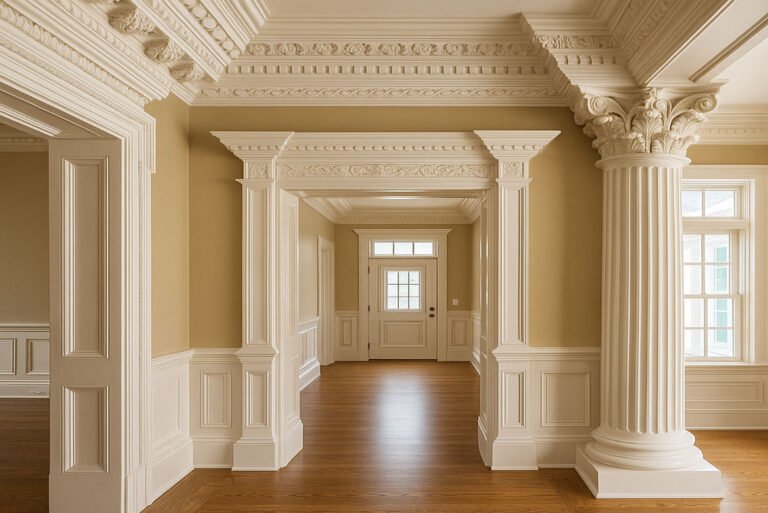When it comes to designing a home, every detail matters. From the layout of the rooms to the smallest decorative elements, each choice contributes to the overall look and feel of the space. One of the most impactful yet often overlooked aspects of home design is architectural millwork.
So, what is house architectural millwork? Simply put, it refers to custom woodwork or manufactured wood products used in the construction and decoration of a home. This includes everything from crown mouldings and baseboards to cabinetry, staircases, and even decorative columns. Millwork is not just about aesthetics—it also serves functional purposes, such as protecting walls, framing openings, and adding structural integrity.
Understanding House Architectural Millwork
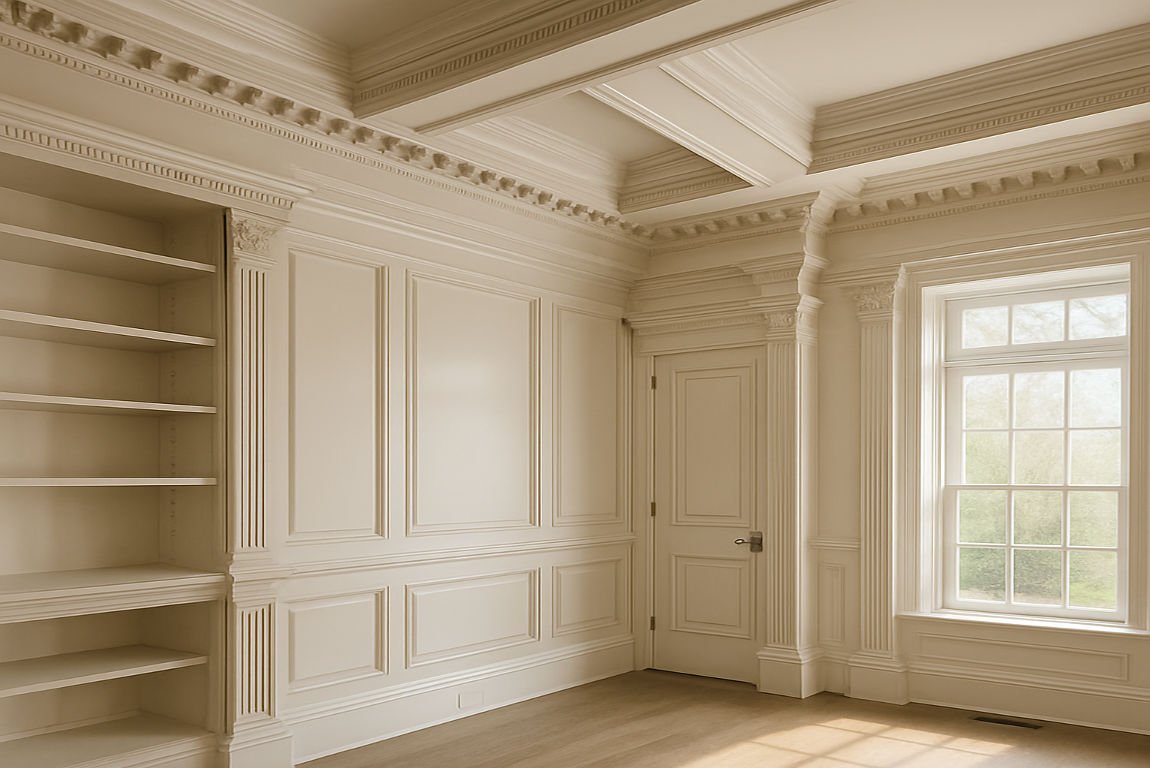
Definition and Scope
Architectural millwork refers to custom woodwork or manufactured wood products that are designed for both functional and decorative purposes in a home. Unlike general carpentry, which focuses on structural elements such as framing and millwork, millwork is all about the finer details that enhance a home’s interior and exterior.
Millwork encompasses a diverse range of elements, including mouldings, trims, cabinetry, and staircases. It is typically crafted from wood but can also incorporate engineered materials, such as MDF (medium-density fiberboard) or modern composites.
How is millwork different from casework? While millwork is custom-made to fit specific spaces and designs, casework refers to prefabricated or modular furniture-like components, such as kitchen cabinets or bookshelves. Millwork is often more intricate and tailored to the home’s architectural style.
Common Types of Architectural Millwork in Houses
Millwork comes in many forms, each serving a unique purpose. Here are some of the most common types:
- Trim and Moldings: These include crown mouldings, baseboards, chair rails, and picture rails. They frame walls and ceilings, adding elegance and definition to a room.
- Doors and Window Casings: Millwork around doors and windows enhances their appearance while also covering gaps and joints, thereby improving the overall aesthetic.
- Staircases and Bannisters: Custom staircases and handrails are often the centrepiece centrepiece of a home’s interior design.
- Wall Panelling and Cabinetry: From wainscoting to built-in cabinets, these elements add both functionality and style to your space.
- Decorative Elements: Features like mantels, columns, and corbels serve as focal points in a room.
Materials Used in House Architectural Millwork
The choice of materials plays a crucial role in the quality and appearance of millwork. Here are some standard options:
MaterialCharacteristics
Oak Durable, with a prominent grain pattern; ideal for traditional designs.
Pine is Affordable and versatile; it is often used for painted millwork.
Maple Smooth and dense; great for modern, sleek finishes.
MDF-engineered wood that’s cost-effective and easy to paint.
Composites: Durable and resistant to moisture, ideal for exterior millwork.
Each material has its pros and cons, so it’s essential to choose one that aligns with your design goals and budget.
The Importance of Architectural Millwork in Residential Design
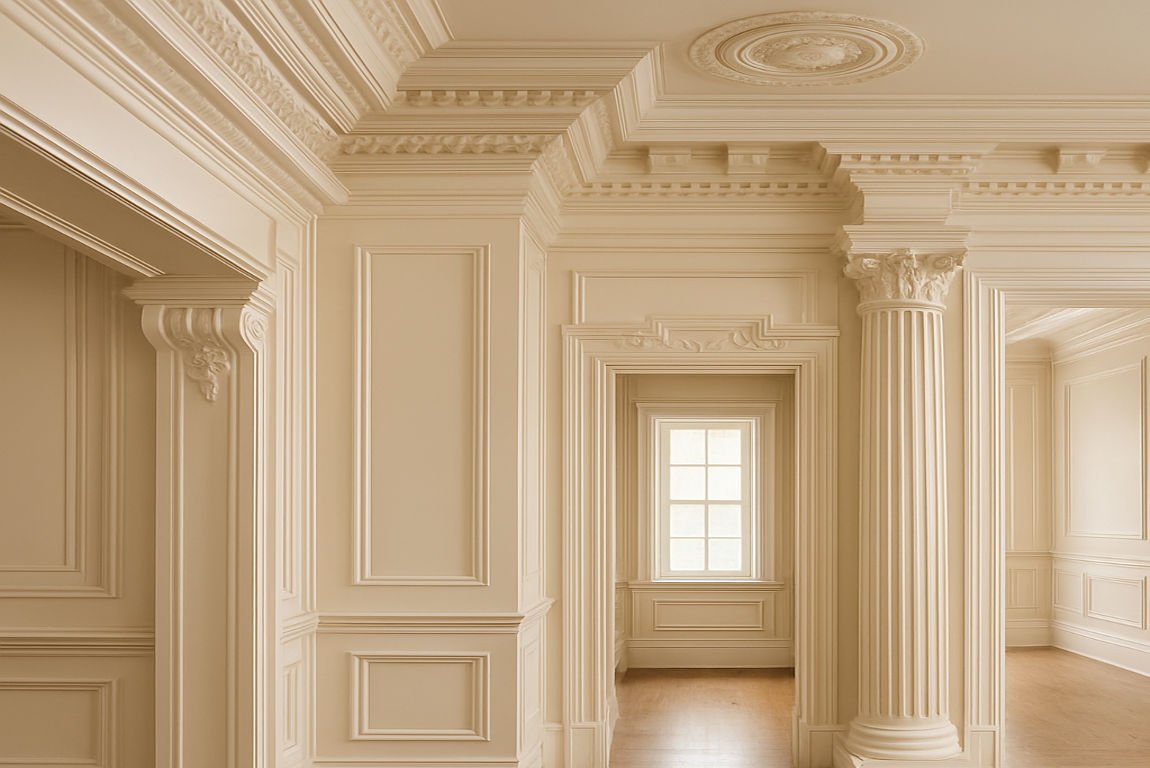
Adding Character and Style
Millwork is like the finishing touch on a masterpiece. It adds character, style, and personality to a home, making it feel complete. Whether you prefer a traditional, modern, or transitional design, millwork can be customized to match your aesthetic vision.
You may also read (is architecture house a recognized stem major).
Functional Benefits
Beyond aesthetics, millwork serves several practical purposes:
- Protecting Walls: Baseboards and chair rails shield walls from scuffs and damage.
- Framing Openings: Door and window casings create clean, polished edges.
- Structural Support: Elements like staircases and columns provide stability.
Reflecting Craftsmanship
High-quality millwork is a testament to skilled Craftsmanship. It reflects attention to detail and enhances the overall architectural style of the home.
Increasing Home Value
Investing in custom millwork can significantly boost your home’s value and appeal. Potential buyers often appreciate the elegance and functionality that millwork brings to a space.
Step-by-Step Guide to Mastering House Architectural Millwork
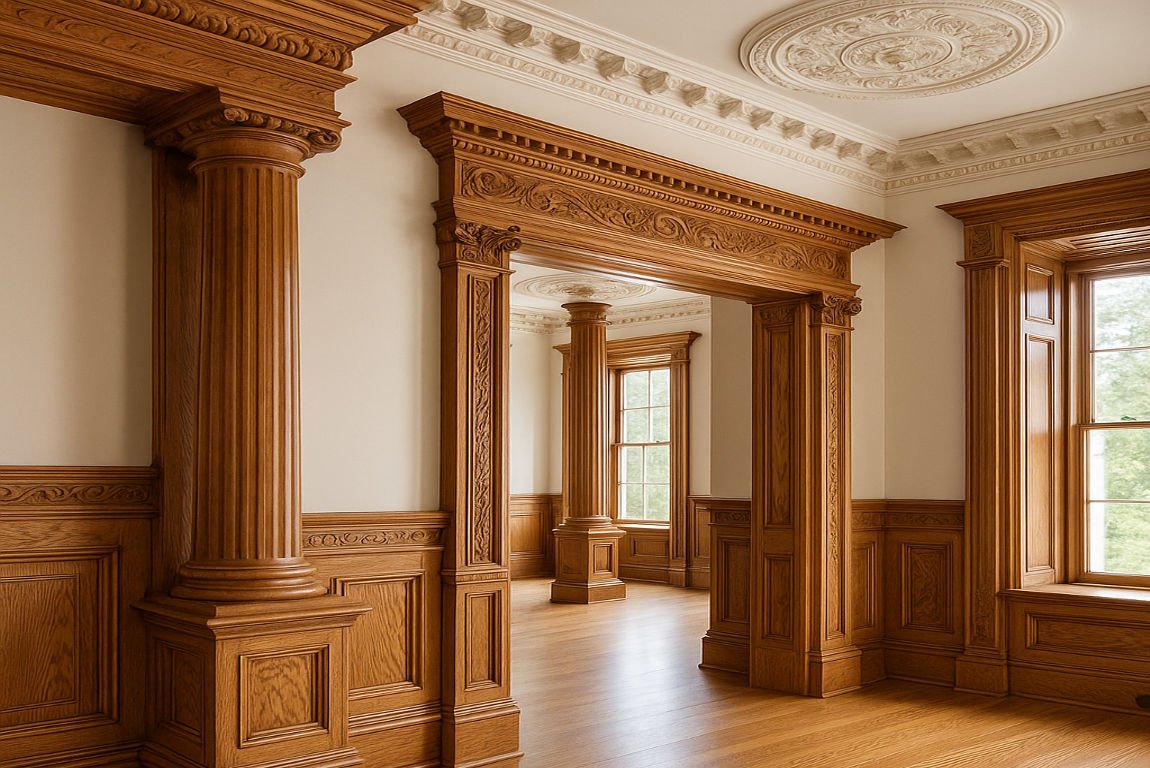
Planning and Design
The first step in mastering millwork is planning and design. Here’s how to get started:
You may also read (elevate your home kitchen how to replace under cabinet flooring).
- Assess Your Home’s Style: Is your home traditional, modern, or a blend of both? Choose millwork elements that complement the overall design.
- Work with Professionals: Collaborate with architects and designers to specify details like dimensions, profiles, and finishes.
- Custom vs. Stock Millwork: Decide whether to invest in custom millwork for a tailored look or opt for stock options to save on costs.
Choosing Materials and Finishes
Selecting the right materials and finishes is crucial for achieving the desired look and durability.
- Wood Species: Select based on factors such as grain pattern, hardness, and cost.
- Finishes: Consider stains, paints, or protective coatings that match your home’s decor.
- Durability: For high-traffic areas, opt for materials that can withstand wear and tear.
Fabrication and Manufacturing Process
Millwork can be crafted using traditional methods or modern technology:
- Hand-Crafted: Offers a unique, artisanal touch but can be time-consuming.
- Machine-Assisted: CNC machines and laser cutters ensure precision and efficiency.
- Quality Standards: Look for certifications that guarantee high-quality Craftsmanship.
Installation Best Practices
Proper installation is key to ensuring that millwork looks great and lasts for years.
- Site Preparation: Clean and level surfaces before installation.
- Techniques: Use appropriate tools and methods for each type of millwork.
- Professional Help: Hiring experienced installers can save time and prevent costly mistakes.
Maintenance and Care
To keep your millwork looking its best:
- Routine Cleaning: Dust and wipe down surfaces regularly to maintain cleanliness.
- Minor Repairs: Fix scratches or chips with wood filler or touch-up paint.
- Refinishing: Reapply stains or paints as needed to maintain the finish.
Modern Trends and Innovations in House Architectural Millwork
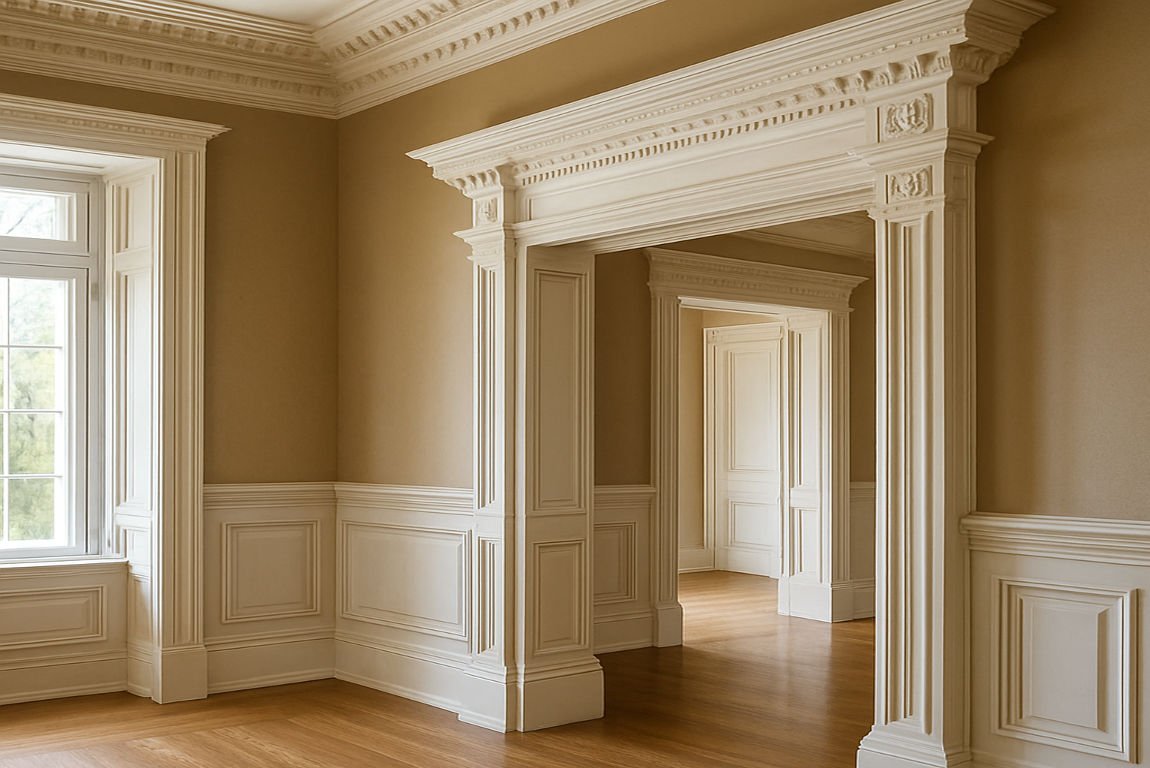
Millwork is constantly evolving with new trends and technologies:
- Sustainable Materials: Eco-friendly woods and composites are gaining popularity.
- Mixed Materials: Combining wood with metal or glass creates a contemporary look.
- Digital Tools: CNC cutting and laser engraving allow for intricate designs.
- Modular Systems: Pre-fabricated components enable faster and easier installation.
You may also read (a guide to understanding architects vs house designers).
